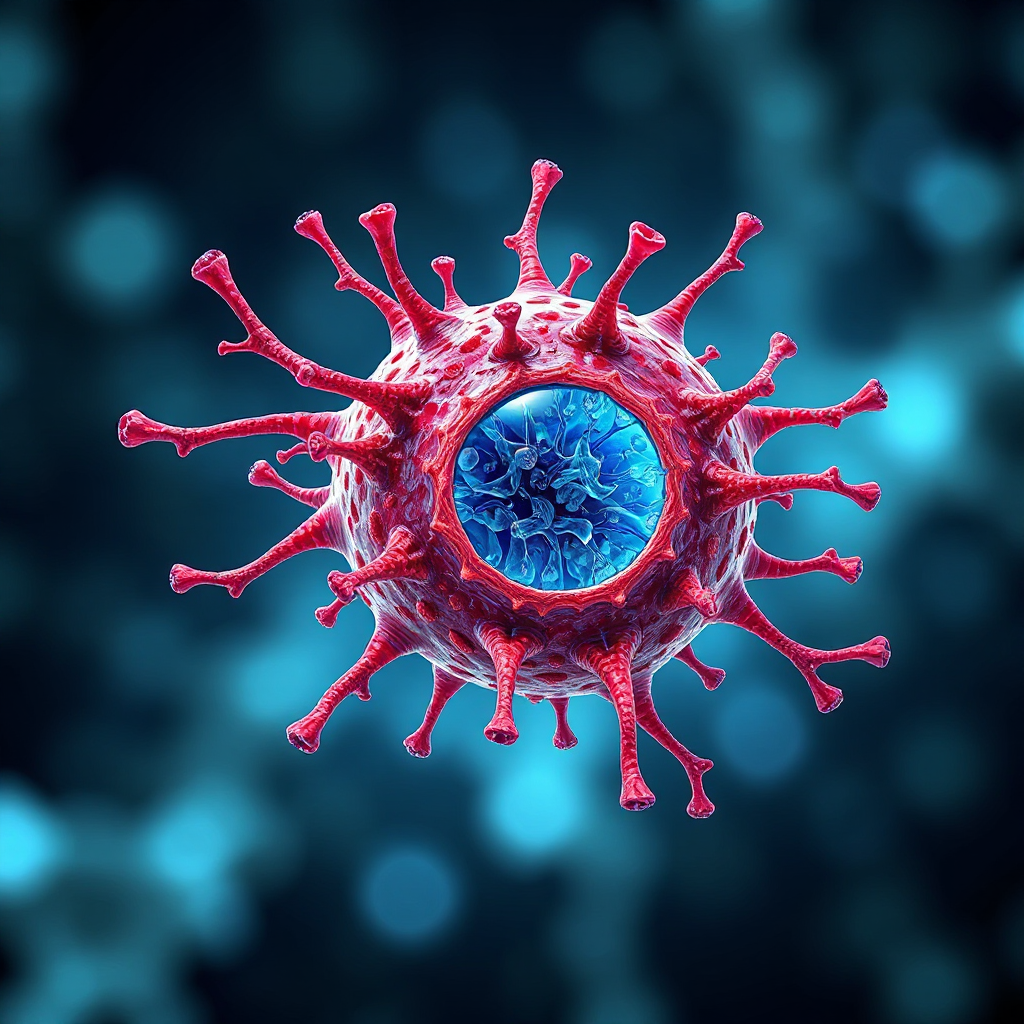Pharyngeal Cancer-What Are the Symptoms and Causes

Pharyngeal cancer affects the throat and can cause symptoms like persistent throat pain, difficulty swallowing, and unexplained weight loss. You may also notice swelling in your neck or changes in your voice. Globally, the disease shows varying trends. For example:
Male death rates per 100,000 in 2015 were 5.03 in the EU, 8.33 in Russia, and 2.53 in the U.S.
Oropharyngeal cancer cases are rising, often linked to HPV infections.
Early detection significantly improves survival rates, with localized cases showing up to 86.6% survival.
Key Takeaways
Look out for ongoing symptoms like throat pain or trouble swallowing. Losing weight without trying can also be a warning sign. Finding cancer early can help save lives.
Smoking and drinking alcohol are big causes of throat cancer. Quitting these habits can make your chances of getting it lower.
Certain viruses, like HPV and EBV, can cause throat cancer. Vaccines and being careful can stop these infections.
Eating lots of fruits and vegetables can keep your throat healthy. Stay away from processed meats and too much alcohol to lower your risk.
See a doctor if you have worrying symptoms. Getting checked and treated early can lead to better health.
Symptoms of Pharyngeal Cancer

General Symptoms
Pharyngeal cancer often presents with symptoms that may seem minor at first but persist over time. You should pay attention to the following signs:
A sore throat that doesn’t improve and isn’t linked to a cold or flu.
Difficulty swallowing, also known as dysphagia, which can make eating or drinking uncomfortable.
Hoarseness or noticeable changes in your voice.
Unexplained weight loss, even if your diet hasn’t changed.
Swelling or lumps in the neck, which may feel painless initially.
Ear pain, ringing in the ears (tinnitus), or frequent headaches.
Nasal congestion, changes in hearing, or a feeling of fullness in one ear.
These symptoms can overlap with other conditions, but their persistence should prompt you to seek medical advice.
Symptoms by Subtype
Nasopharyngeal Cancer Symptoms
Nasopharyngeal cancer often affects areas near the nose and ears. You might notice:
Nasal blockages or persistent stuffiness.
Nosebleeds or facial numbness.
Ringing or pain in the ears, sometimes accompanied by hearing changes.
Blurry or double vision.
Headaches or a lump in the upper neck.
Oropharyngeal Cancer Symptoms
Oropharyngeal cancer impacts the middle part of the throat, including the tongue and tonsils. Symptoms include:
Difficulty opening your mouth or moving your tongue.
A white patch on the tongue, soft palate, or lining of the mouth that doesn’t heal.
Pain during swallowing or speaking.
Hypopharyngeal Cancer Symptoms
Hypopharyngeal cancer develops in the lower part of the throat. You may experience:
A hoarse voice or high-pitched sounds when breathing.
Difficulty breathing or swallowing.
A persistent sore throat that worsens over time.
Cancer Type | Symptoms |
|---|---|
Nasopharyngeal | Sore throat, nasal blockages, nosebleeds, facial numbness, ear pain, blurry vision |
Oropharyngeal | Difficulty moving tongue, white patches in the mouth, pain during swallowing |
Hypopharyngeal | Hoarseness, high-pitched breathing sounds, persistent sore throat |
Recognizing these symptoms early can lead to timely diagnosis and treatment. If you notice any of these signs, consult a healthcare provider promptly.
Causes of Pharyngeal Cancer

General Causes
Tobacco Use (Smoking and Chewing)
Tobacco use remains one of the leading causes of pharyngeal cancer. Smoking introduces harmful chemicals into your throat, damaging cells and increasing the risk of cancer. Chewing tobacco exposes the pharynx to carcinogens directly, further elevating the danger.
Excessive Alcohol Consumption
Drinking heavily can irritate the lining of your throat, making it more vulnerable to cancer. When combined with tobacco use, the risk multiplies significantly.
Human Papillomavirus (HPV) Infection
HPV plays a major role in the development of oropharyngeal cancer. This virus can infect your mouth and throat, leading to cancer years after the initial exposure. In the United States, HPV accounts for 60% to 70% of oropharyngeal cancer cases.
Epstein-Barr Virus (EBV) Infection
EBV is closely linked to nasopharyngeal cancer. This virus can trigger abnormal cell growth in the nasopharynx, especially when combined with other factors like diet or genetics.
Primary Risk Factors | |
|---|---|
General Pharyngeal | Excessive drinking, Use of tobacco products, Older age, Male gender, Family history of head and neck cancers |
Nasopharyngeal | Exposure to Epstein-Barr virus (EBV), Geographic prevalence in South Asia, Middle East, North Africa, Greenland |
Oropharyngeal | Infections with human papillomavirus (HPV), Linked to sexual transmission |
Hypopharyngeal | Smoking tobacco, Drinking alcohol, Male gender, Age over 55, African American or white |
Subtype-Specific Causes
Nasopharyngeal Cancer Causes
Several factors increase your risk of nasopharyngeal cancer:
Epstein-Barr virus infection: This virus rarely causes cancer on its own but can lead to abnormal cell growth in the nasopharynx.
Dietary factors: Consuming salt-cured fish and meat may damage DNA and enhance EBV’s carcinogenic effects.
Inherited factors: Certain genetic traits may make you more susceptible to this cancer.
Oropharyngeal Cancer Causes
HPV is the primary cause of oropharyngeal cancer. The virus can infect your throat and mouth, often spreading through sexual contact. It may take years for the infection to develop into cancer.
Hypopharyngeal Cancer Causes
Hypopharyngeal cancer has unique risk factors:
Tobacco and alcohol use: Using both significantly increases your risk.
Poor nutrition: Deficiencies in iron and vitamins can heighten susceptibility.
Plummer-Vinson syndrome: This rare condition raises the risk of hypopharyngeal cancer.
Recognizing these causes can help you understand your risk and take preventive measures.
Risk Factors for Pharyngeal Cancer
Lifestyle Factors
Smoking and Tobacco Use
Smoking tobacco introduces harmful chemicals into your throat, significantly increasing your risk of pharyngeal cancer. Chewing tobacco also exposes your throat to carcinogens, further elevating this risk. If you combine smoking with heavy alcohol use, your chances of developing this cancer rise dramatically.
Risk Factor | Description |
|---|---|
Tobacco Use | Smoking tobacco significantly increases the risk of pharyngeal cancer. |
Alcohol Use | Moderate or heavy alcohol consumption raises the risk, especially when combined with tobacco use. |
Poor Nutrition | Nutritional deficiencies may contribute to the risk, particularly in heavy drinkers. |
Heavy Alcohol Use
Drinking alcohol irritates the lining of your throat, making it more vulnerable to cancer. When combined with smoking, the risk multiplies. Avoiding these habits can reduce your chances of developing pharyngeal cancer.
Poor Diet and Nutrition
A diet low in fruits and vegetables increases your risk of pharyngeal cancer. These foods contain nutrients that protect your throat from damage. On the other hand, consuming large amounts of red meat, dairy, and saturated fats can raise your risk.
Tip: Eating more fruits and vegetables while reducing red meat and dairy intake can lower your risk of pharyngeal cancer.
Environmental Factors
Exposure to Certain Chemicals or Pollutants
Long-term exposure to pollutants like PM2.5 (fine particulate matter) has been linked to higher rates of pharyngeal cancer. Studies show that areas with high air pollution see increased cases of head and neck cancers, including pharyngeal cancer.
Occupational Hazards
Certain jobs expose you to harmful substances that increase your risk. For example, working with formaldehyde, wood dust, or asbestos can significantly elevate your chances of developing pharyngeal cancer.
Occupational Hazard | Association with Pharyngeal Cancer |
|---|---|
Formaldehyde | Significant |
Wood Dust | Significant |
Coal Dust | Significant |
Asbestos | Significant |
Welding Fumes | Significant |
Biological Factors
Age and Gender
Your risk of pharyngeal cancer increases as you age, especially if you are male. Men are more likely to develop this cancer than women.
Genetic Predisposition
Certain genetic conditions, like Fanconi anemia and dyskeratosis congenita, put you at a much higher risk of pharyngeal cancer. These syndromes affect your body’s ability to repair damaged DNA, making cancer more likely.
Genetic Syndrome | Associated Risks |
|---|---|
Fanconi anemia | Very high risk of throat cancer, including laryngeal and hypopharyngeal cancers. |
Dyskeratosis congenita | Very high risk of developing head and neck cancers, especially of the mouth and throat. |
Viral Infections (HPV, EBV)
Infections like HPV and Epstein-Barr virus (EBV) play a significant role in pharyngeal cancer. HPV is a leading cause of oropharyngeal cancer, while EBV is closely linked to nasopharyngeal cancer. Protecting yourself from these infections can lower your risk.
Pharyngeal cancer symptoms, like persistent throat pain or difficulty swallowing, require immediate attention. Early detection improves outcomes significantly. For example, the five-year survival rate for localized cases can reach up to 86.6%.
Type of Pharyngeal Cancer | Overall 5-Year Survival Rate | Localized | Regional | Distant |
|---|---|---|---|---|
Oral cavity and pharynx | 68.5% | 86.6% | 69.1% | 39.3% |
Nasopharyngeal | 63% | 82% | 72% | 49% |
Oropharyngeal | 52% | 59% | 62% | 29% |
Hypopharyngeal | 37% | 61% | 39% | 28% |
If you notice symptoms like a painless neck lump, hoarseness, or difficulty swallowing, take action. Steps may include:
Consulting a healthcare provider for evaluation.
Exploring treatments like surgery, radiation, or immunotherapy.
Tip: Addressing symptoms early can save lives.
FAQ
What is the difference between pharyngeal cancer and throat cancer?
Pharyngeal cancer specifically affects the pharynx, which includes the nasopharynx, oropharynx, and hypopharynx. Throat cancer is a broader term that may also include cancers of the larynx (voice box) and other nearby structures.
Can pharyngeal cancer be prevented?
You can reduce your risk by avoiding tobacco and alcohol, maintaining a healthy diet, and getting vaccinated against HPV. Regular check-ups and early detection also play a key role in prevention.
Is pharyngeal cancer hereditary?
Pharyngeal cancer is not usually hereditary. However, genetic predispositions, such as Fanconi anemia or dyskeratosis congenita, can increase your risk. Discuss your family history with a healthcare provider to assess your risk.
How is pharyngeal cancer diagnosed?
Doctors use a combination of physical exams, imaging tests (like CT or MRI scans), and biopsies to diagnose pharyngeal cancer. They may also perform endoscopy to examine your throat more closely.
What are the treatment options for pharyngeal cancer?
Treatment depends on the cancer’s stage and location. Common options include surgery, radiation therapy, chemotherapy, and immunotherapy. Your doctor will recommend a personalized treatment plan based on your specific condition.
Tip: Early diagnosis improves treatment outcomes. If you notice persistent symptoms, consult a healthcare provider immediately.
See Also
Recognizing Hypopharyngeal Cancer: Key Symptoms To Watch For
Identifying Head and Neck Cancer: Symptoms and Causes Explained
Laryngeal Cancer: Symptoms To Recognize And Causes To Know
Esophageal Cancer: Key Symptoms And Causes You Should Know
Gastric Stomach Cancer: Major Symptoms And Causes To Understand
